Manuka honey is pretty amazing stuff! Not only is it good for your immune system, it is also very effective at healing minor wounds and scrapes. This makes it the perfect addition to a salve! Propolis extract gives this manuka honey salve an extra boost!
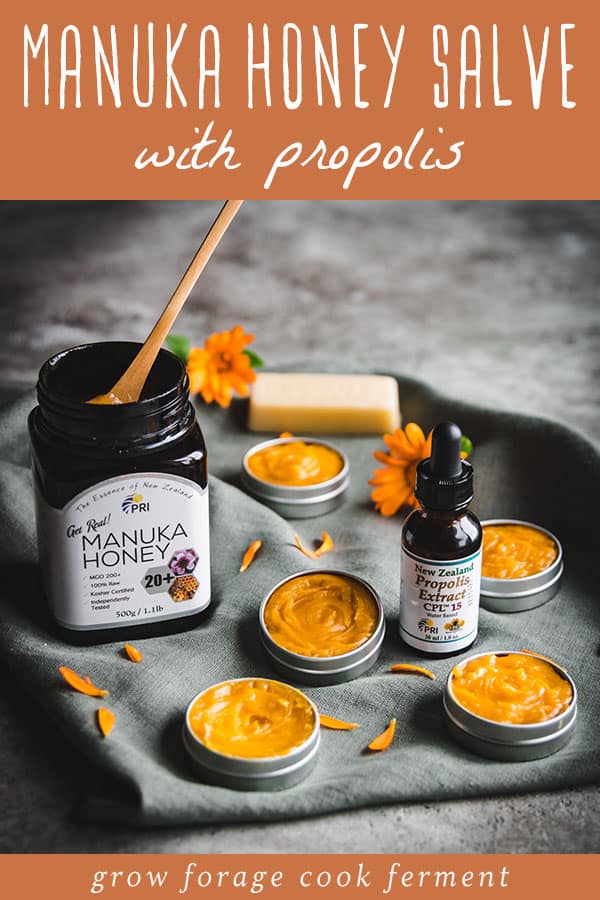
Want to save this post for later?
Manuka Honey and Propolis Extract from PRI
{This post is sponsored by Pacific Resources International (PRI)}
To make this salve, I used Manuka Honey and Propolis Extract from Pacific Resources International (also known as PRI).
PRI sells only genuine Manuka Honey that is independently tested for potency and purity. They work directly with the bee keepers in New Zealand and Australia who harvest the honey for their products.
Manuka honey has powerful antibacterial and antioxidant properties, which makes it a great choice for use on minor wounds, scrapes, and burns.
Propolis extract is anti-inflammatory and antimicrobial, so it is another great addition to topical salves! It can help to heal minor wounds and burns faster and has even been shown to have regenerative properties.
Propolis is also highly beneficial for the immune system and definitely something that we should be using more of!
See my other recipes using PRI honey and propolis:
Use this special code to get 10% off at PRI: GFCF
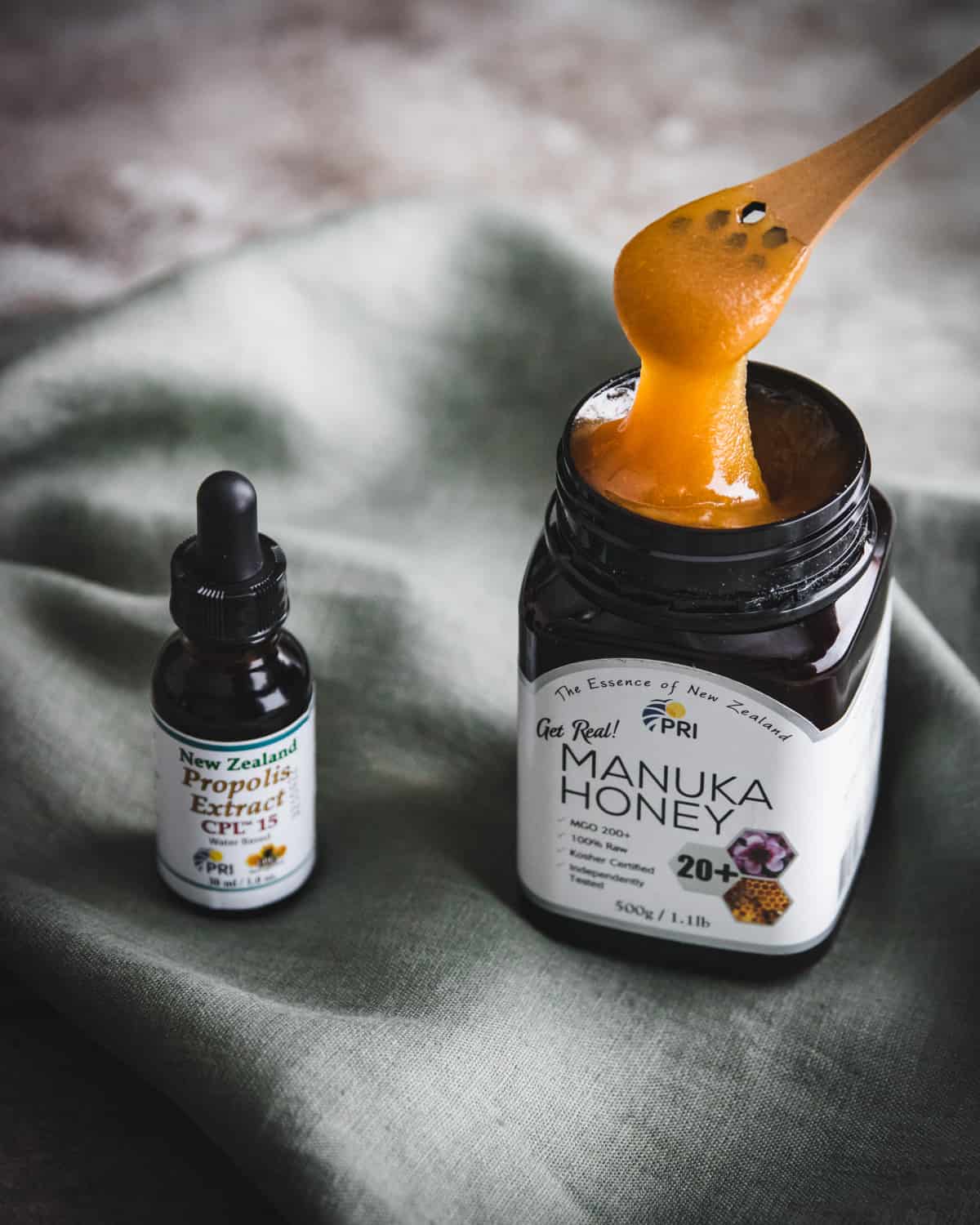
Manuka Honey Salve Recipe
This manuka honey salve is easy to put together once you have all of the ingredients!
You can use any carrier oil you like as the base for the salve, but olive oil and/or coconut oil are good bets.
I used a calendula flower infused blend of olive oil and coconut oil. Calendula infused oil is highly beneficial for the skin and for healing minor wounds, so it is a great optional addition!
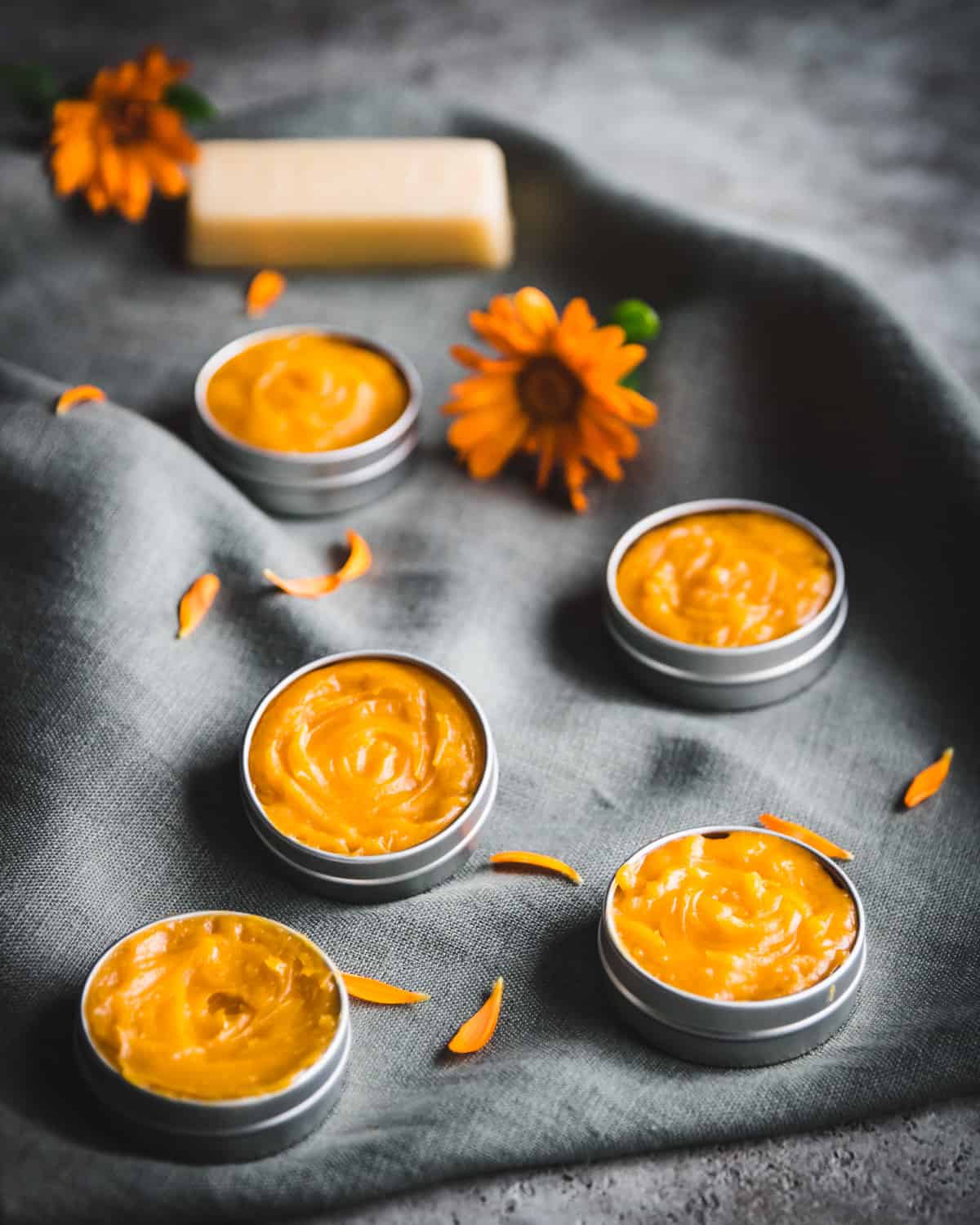
Heat the Oil and Beeswax
The first step is to heat the oil in a double boiler.
You can create a makeshift double boiler by putting a small bowl or a glass Pyrex measuring cup over a pot with about an inch of simmering water.
Then add the beeswax to the oil and stir occasionally until it is completely dissolved. I find that a bamboo skewer works well for this.
Take the oil and beeswax mixture off of the double boiler immediately after the beeswax has melted.
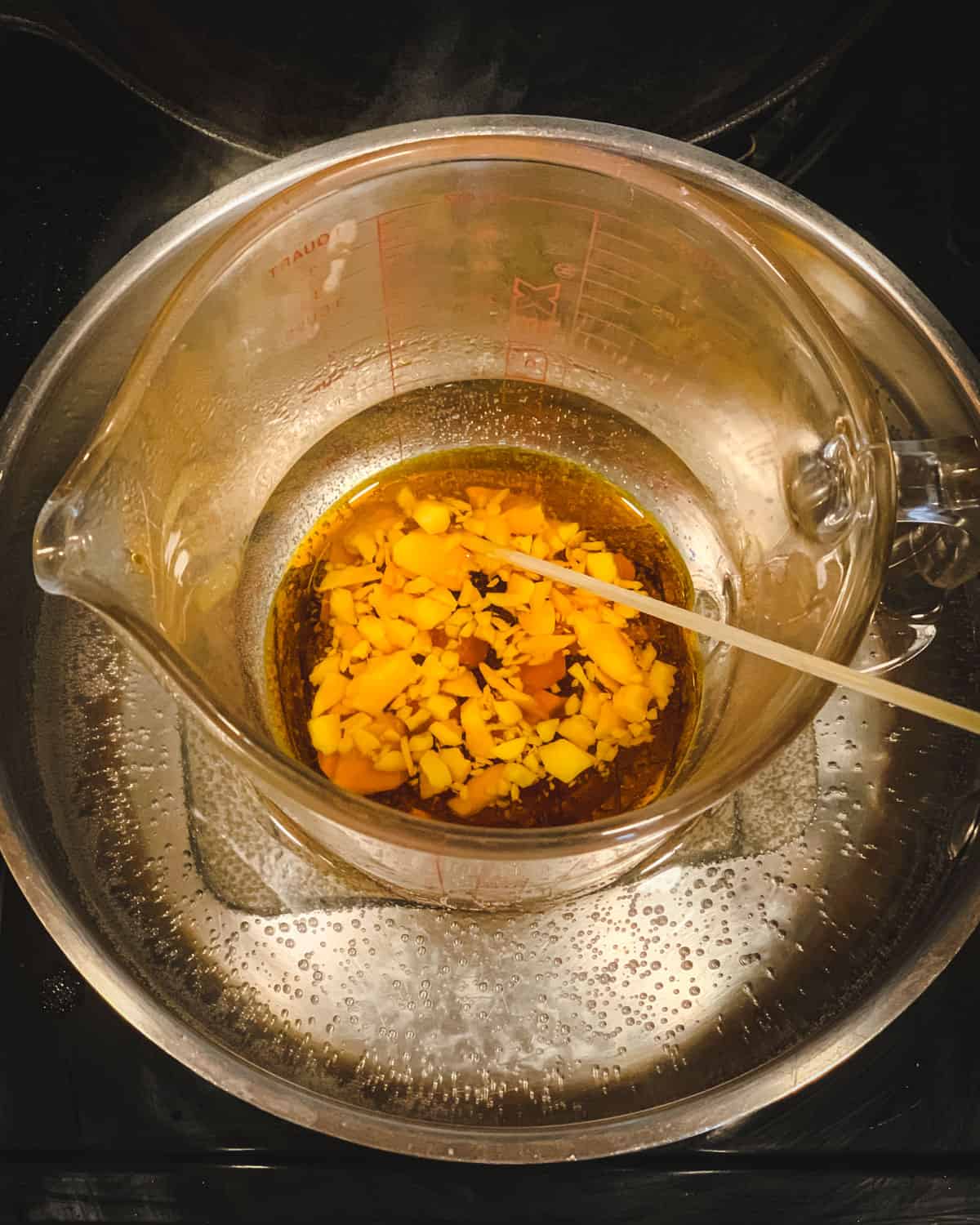
Cool the Mixture and Add the Honey
Manuka honey is heat sensitive, so you don’t want to add it to the oil/beeswax mixture until it has cooled a bit to preserve the beneficial compounds in the honey.
The tricky part is that as it cools it starts to solidify.
Use a kitchen thermometer to see what temperature the oil/beeswax mixture is at. Continue stirring with the bamboo skewer until it ideally gets down to 104°F (40°C).
A few degrees over will probably be ok, because as soon as you add the honey it will immediately drop the temperature of the mixture by a few degrees.
Once the temperature is where you want it, add the manuka honey, stirring constantly to combine it before it sets. Add the propolis extract drops and preservative as you are stirring.
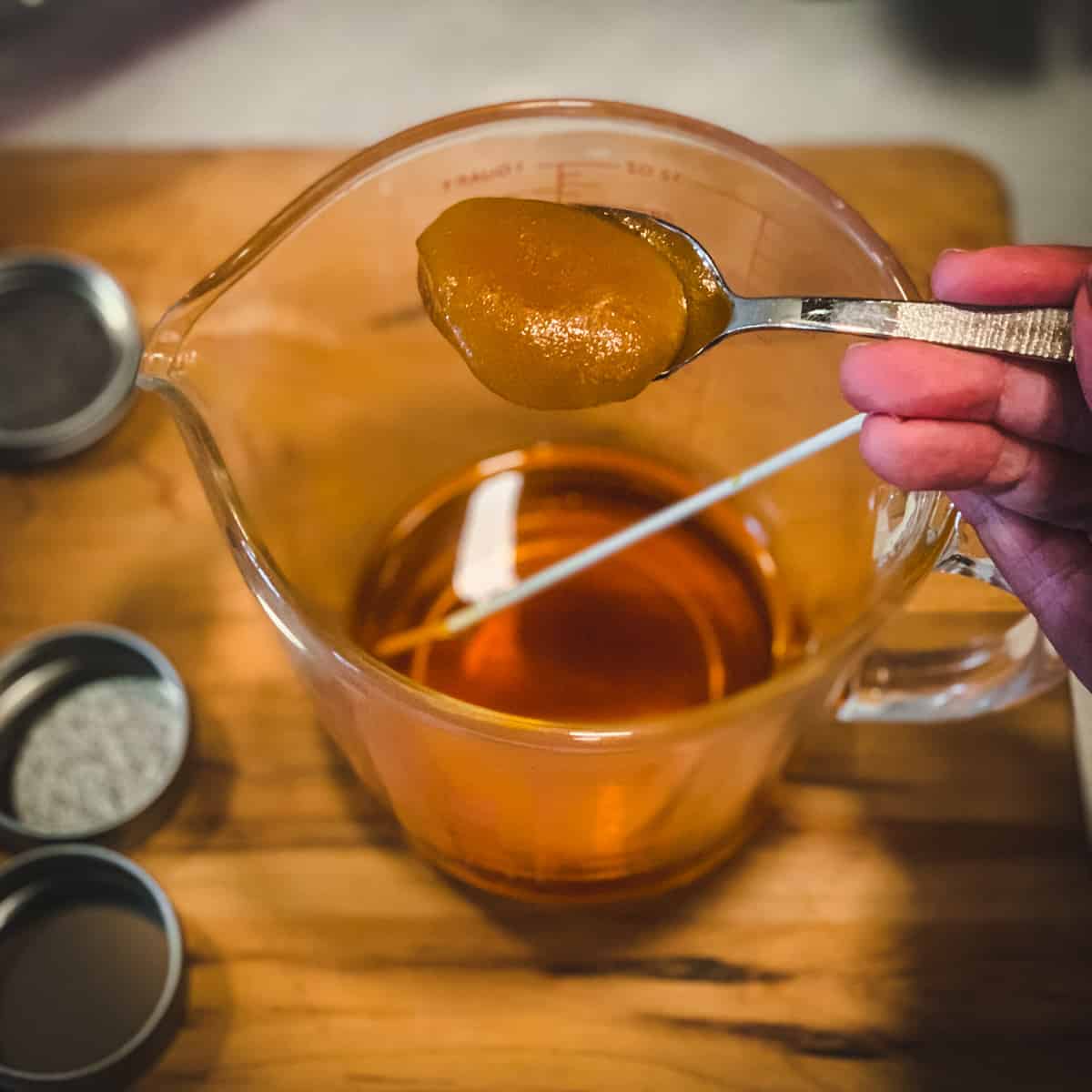
Pour the Salve Into Tins
When everything is thoroughly combined, quickly pour the salve into tins or jars.
It will have thickened up some at this point, but you should still be able to pour most of it out. You may have to use a spoon to scoop it out if need be.
Set the salves aside to set up for several hours or overnight before using.
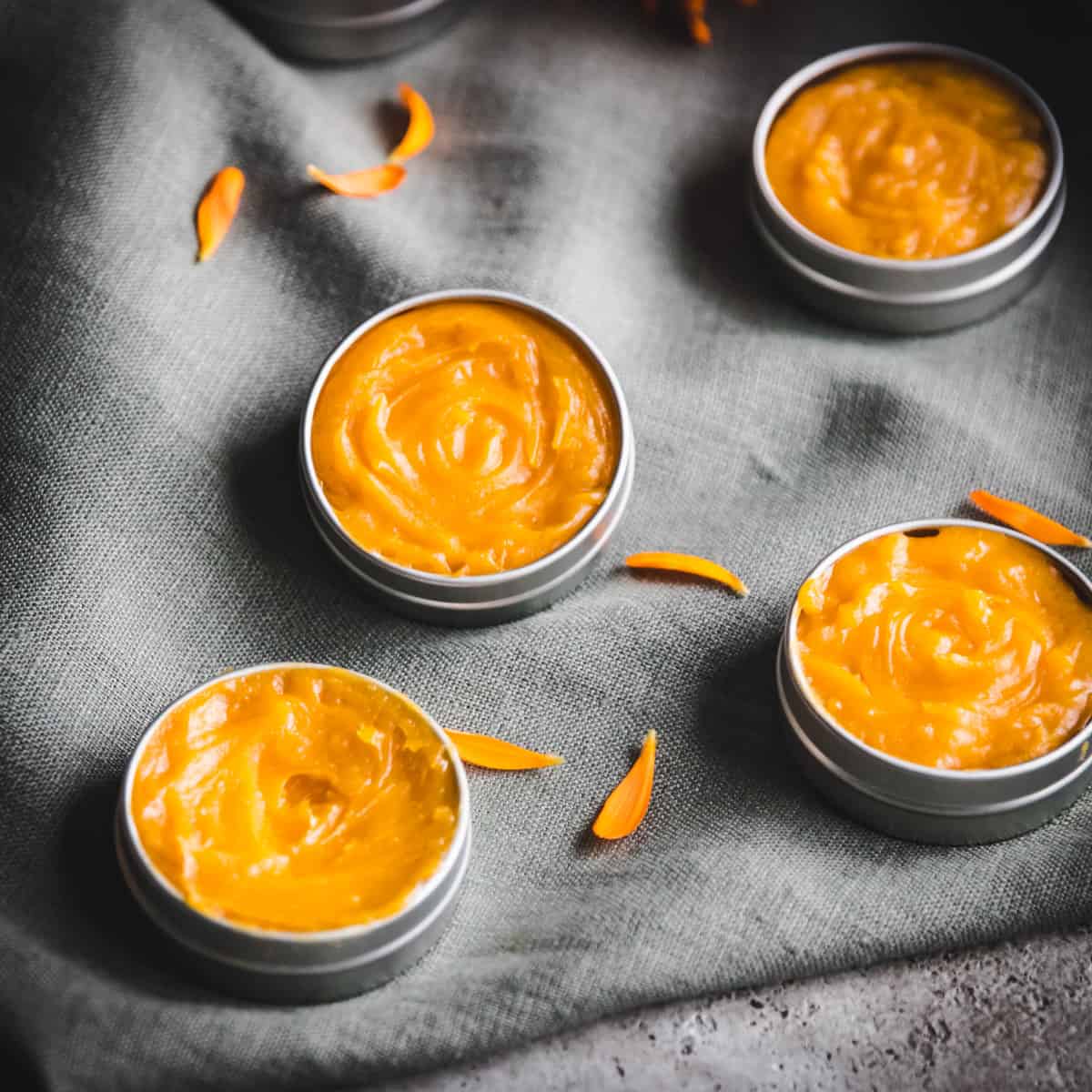
Is a Preservative Necessary for a Salve with Honey?
It is best to add a preservative to this recipe to be on the safe side. While honey has antibacterial properties, it does also contain water which means that a preservative should be added.
Two natural preservative options that are very effective are PhytoCide Elderberry OS and Leucidal Liquid SF. For a stronger, less natural preservative, try Germall Plus.
To determine how much to use it’s best to follow the instructions on the product you choose.
Jan Berry of the Nerdy Farm Wife has a great post about using natural preservatives in homemade products and which ones work best if you’d like to do more research.
How to Use Manuka Honey Salve
This salve is best for use on minor wounds, scrapes, bug bites, rashes, and burns.
The manuka honey and propolis will help to speed up the healing process! If you used calendula infused oil that will also help.
Put a small amount of the salve to cover the affected area and either leave it or cover it with a bandage if you prefer.
It’s almost like a homemade natural antibiotic ointment!
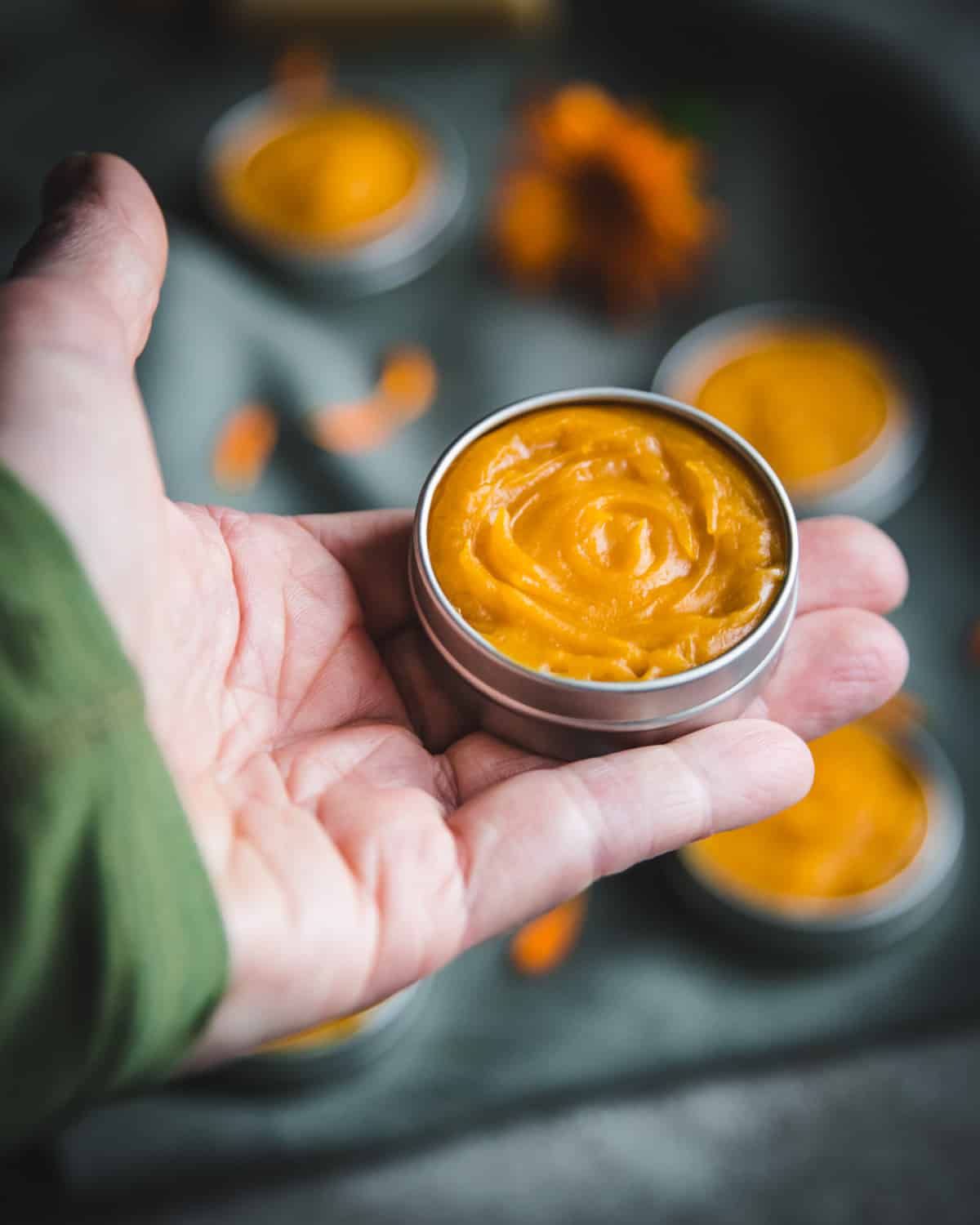
Can Manuka Honey Salve be Used as a Moisturizer?
Because of the amount of honey added to this salve, it is quite sticky and not well suited for use as a moisturizer, though it is great for the skin.
If you would like to use it as a moisturizer I would add much less honey, perhaps one teaspoon. Then you still get the skin benefits of the honey with much less stickiness.
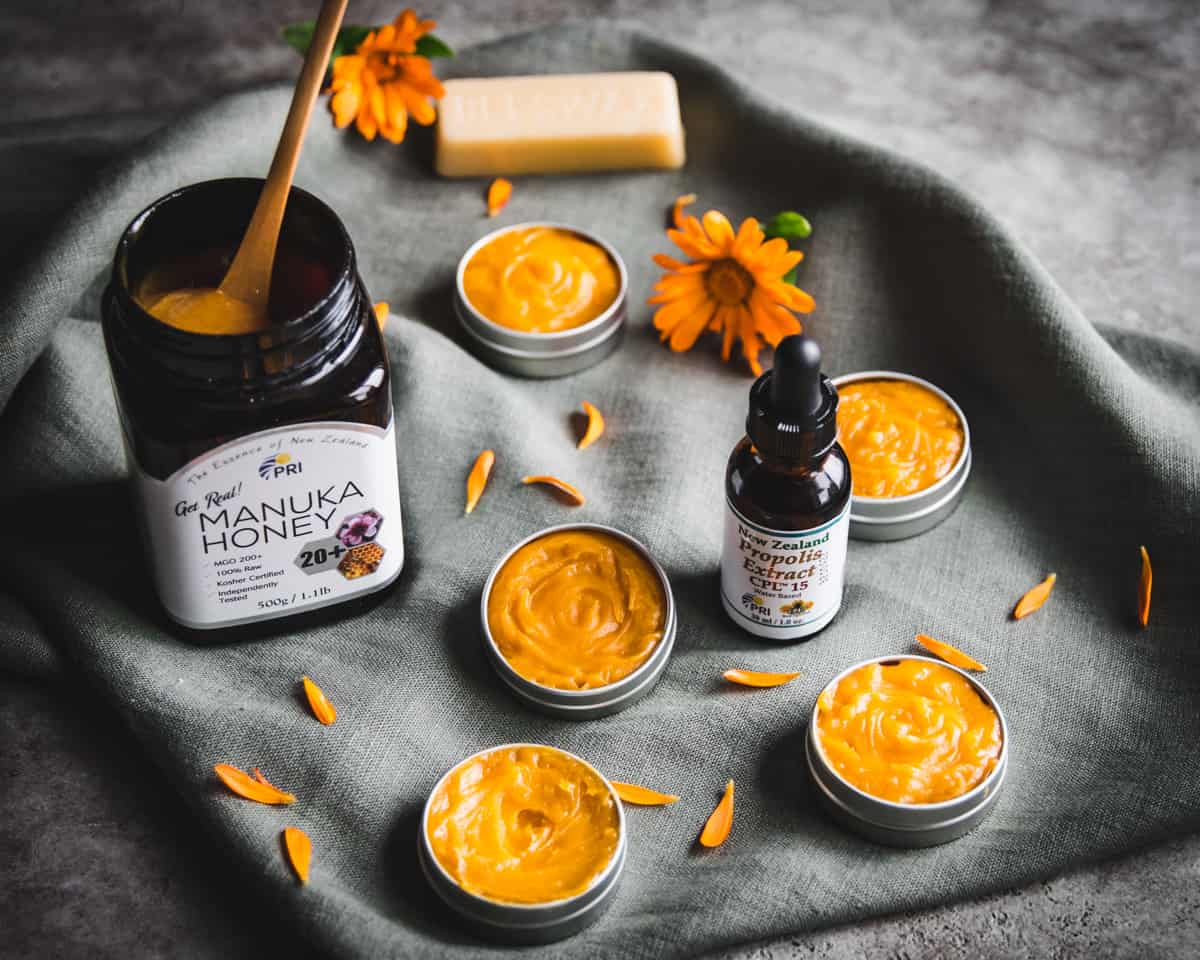
This is such a great salve to have in your first aid kit!
It’s so useful and it’s always nice to have natural and homemade alternatives, thanks to the power of manuka honey and propolis extract!
Herbal Salve Recipes
Here are some other medicinal herbal salve recipes you may like:
- Dandelion Salve
- How to Make a Yarrow Plant Salve
- Plantain Salve
- Calendula Salve
- St. John’s Wort Salve
- Diaper Rash Salve
- How to Make an Herbal Salve
- 10 Herbal Salve Recipes for Natural Skin Care
- Pine Salve
Manuka Honey Salve with Propolis
Ingredients
- 1/2 cup carrier oil of choice can be an infused herbal oil
- 1/2 ounce beeswax
- 2 tbsp Manuka honey
- 30 drops proplis extract
- preservative of choice see post for more info
Instructions
- Heat the oil in a double boiler. You can create a makeshift double boiler by putting a small bowl or a glass Pyrex measuring cup over a pot with about an inch of simmering water.
- Add the beeswax to the oil and stir occasionally (a bamboo skewer works well) until it is completely dissolved. Take the oil and beeswax mixture off of the double boiler immediately after the beeswax has melted.
- Use a kitchen thermometer to see what temperature the oil/beeswax mixture is at. Continue stirring with the bamboo skewer until it ideally gets down to 104°F (40°C).
- Add the manuka honey, stirring constantly to combine it before it sets. Add the propolis extract drops and preservative as you are stirring.
- When everything is thoroughly combined, quickly pour the salve into tins or jars. It will have thickened up some at this point, but you should still be able to pour most of it out. You may have to use a spoon to scoop it out if need be.
- Set the salves aside to set up for several hours or overnight before using.

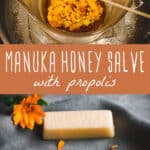

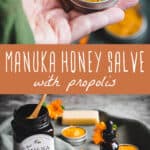
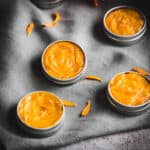

How long will this last, shelf life?
Thanks
A year or more when stored in a cool, dark pantry or refrigerator.
How much preservative should be used? I got phenoxyethanol
Follow the instructions on the product.
Can the propolis be omitted, or will that mess up the recipe? I don’t have it on hand so was hoping to make this with what I do have.
That’s fine!
Is this sticky?
No, it’s not.
Haven’t tried this yet, because I have a question. Would this be of help for psoriasis?
I can’t say for sure, but raw honey has been shown to help different kinds of eczema.